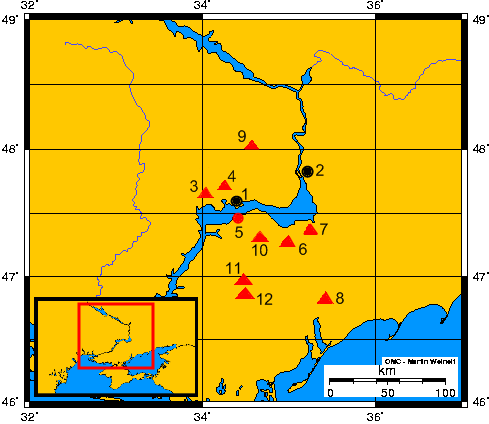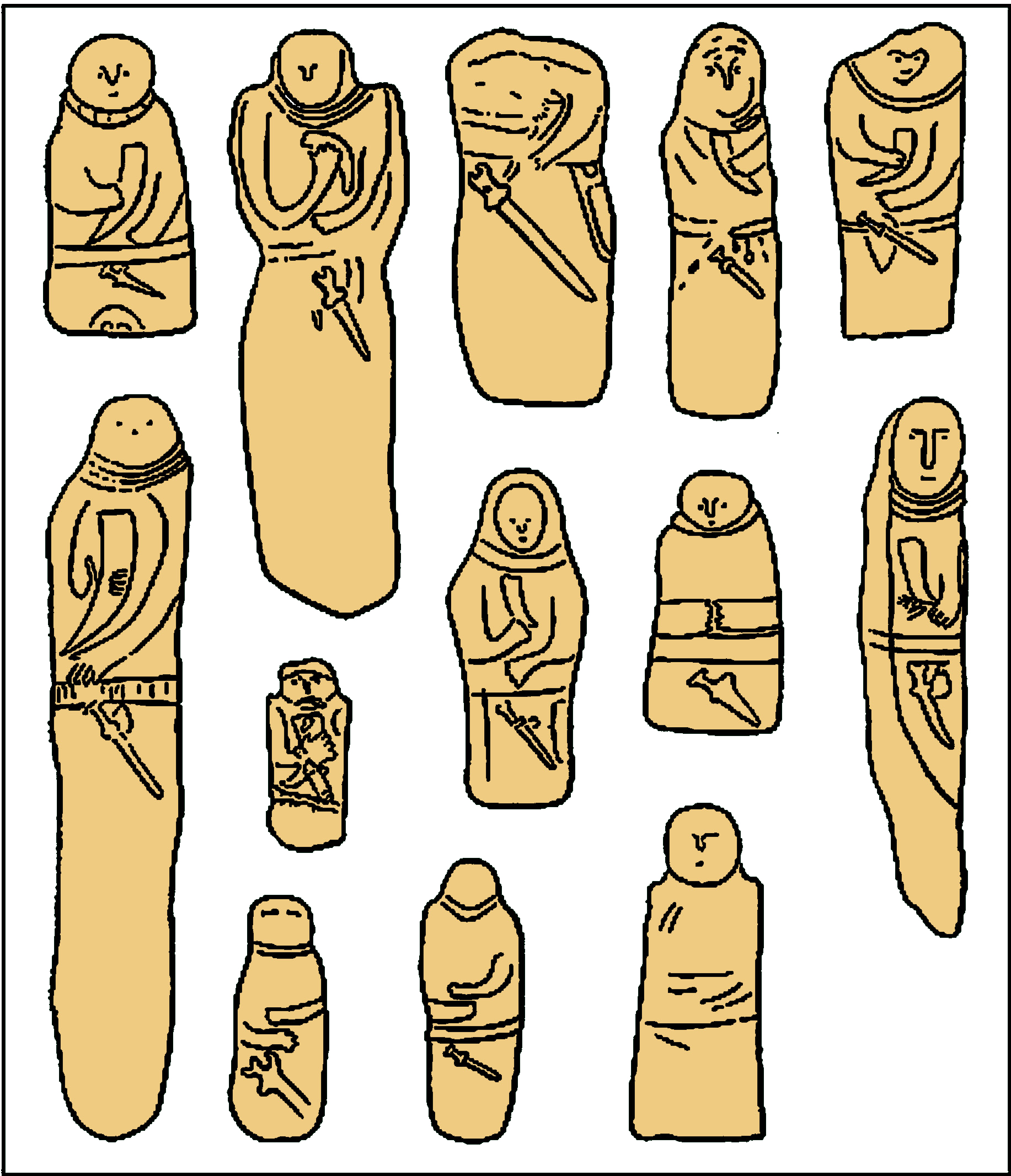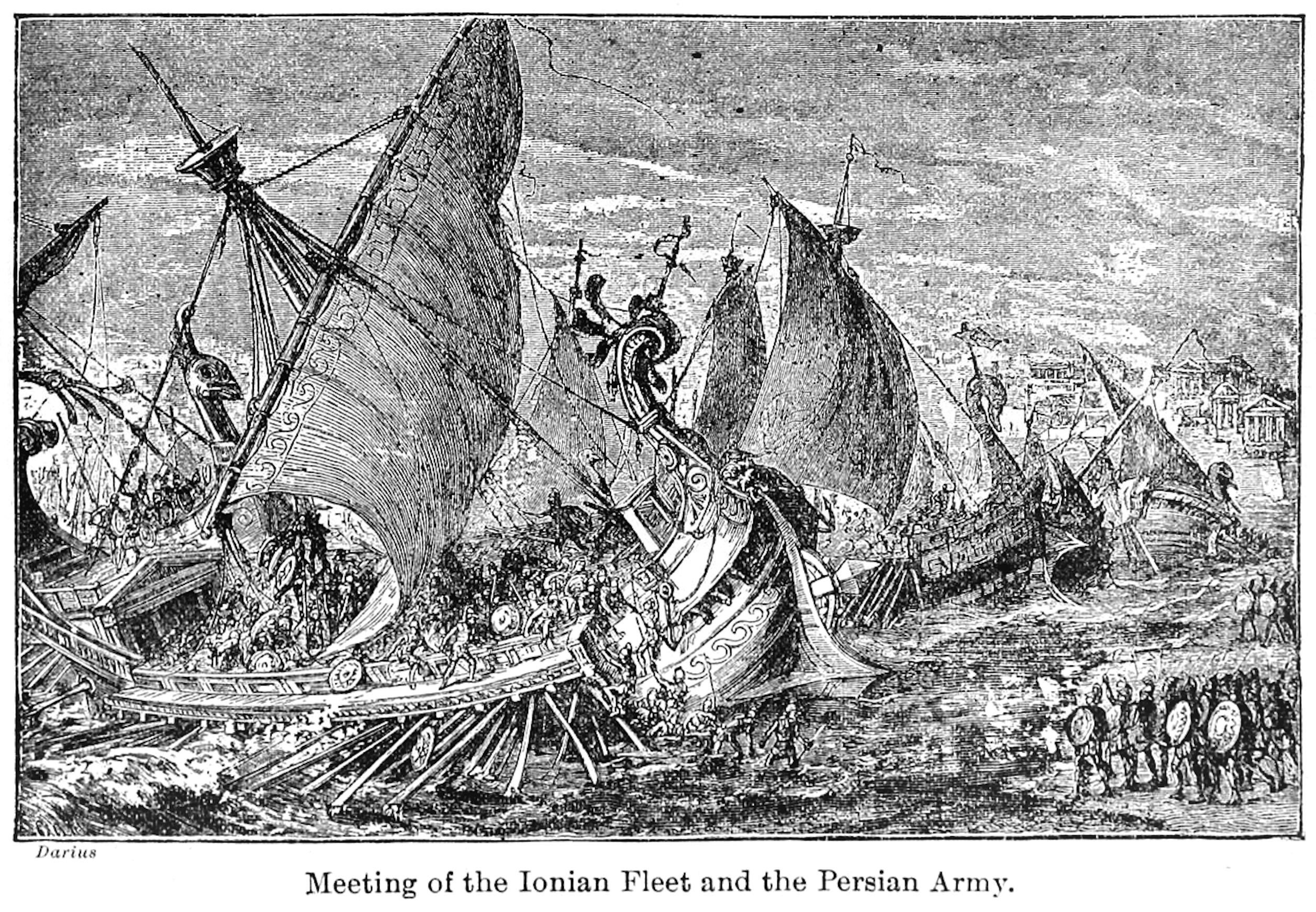|
Scythia
Scythia ( Scythian: ; Old Persian: ; Ancient Greek: ; Latin: ) or Scythica (Ancient Greek: ; Latin: ), also known as Pontic Scythia, was a kingdom created by the Scythians during the 6th to 3rd centuries BC in the Pontic–Caspian steppe. History Background Origins of the Scythians The Scythians originated in Central Asia possibly around the 9th century BC, and they arrived in the Caucasian Steppe in the 8th and 7th centuries BC as part of a significant movement of the nomadic peoples of the Eurasian Steppe. This movement started when another nomadic Iranian tribe closely related to the Scythians, either the Massagetae or the Issedones, migrated westwards, forcing the Early Scythians to the west across the Araxes river, following which the Scythians moved into the Caspian Steppe, where they conquered the territory of the Cimmerians, who were also a nomadic Iranian people closely related to the Scythians, and assimilated most of them while displacing the rest, before sett ... [...More Info...] [...Related Items...] OR: [Wikipedia] [Google] [Baidu] |
Scythian Culture
The Scythian culture was an Iron Age archaeological culture which flourished on the Pontic-Caspian steppe in Eastern Europe from about 700 BC to 200 AD. It is associated with the Scythians and other peoples inhabiting the region of Scythia, and was part of the wider Scytho-Siberian world. Chronology The Scythian Culture can be divided into three stages: * Early Scythian – from the mid-8th or the late 7th century BC to about 500 BC * Mid-Scythian or Classical Scythian – from about 500 BC to about 200 BC * Late Scythian – from about 200 BC to the mid-3rd century AD, in the Crimea and the Lower Dnipro, by which time the population was settled. Development Early Scythian The Early Scythian Culture emerged during the 8th century BC. Since the Scythians were nomads who did not create permanent settlements, the Early Scythian culture is known primarily from Scythian funerary sites. The earliest Scythians had belonged to the Srubnaya culture in its Srubnaya-Khvalynsk form, and ... [...More Info...] [...Related Items...] OR: [Wikipedia] [Google] [Baidu] |
Scythian Religion
The Scythian religion refers to the mythology, ritual practices and beliefs of the Scythian cultures, a collection of closely related ancient Iranian peoples who inhabited Central Asia and the Pontic–Caspian steppe in Eastern Europe throughout Classical Antiquity, spoke the Scythian language (itself a member of the Eastern Iranian language family), and which included the Scythians proper, the Cimmerians, the Sarmatians, the Alans, the Sindi, the Massagetae and the Saka. The Scythian religion is assumed to have been related to the earlier Proto-Indo-Iranian religion as well as to contemporary Eastern Iranian and Ossetian traditions, and to have influenced later Slavic, Hungarian and Turkic mythologies. Development The Scythian religion was of Iranian origin. The religion was influenced by that of the populations whom the Scythians had conquered, such as the sedentary Thracian populations of the western Pontic steppe. Due to this, many of the Scythian male deities ... [...More Info...] [...Related Items...] OR: [Wikipedia] [Google] [Baidu] |
Thracian Religion
The Thracian religion refers to the mythology, ritual practices and beliefs of the Thracians, a collection of closely related ancient Indo-European peoples who inhabited eastern and southeastern Europe and northwestern Anatolia throughout antiquity and who included the Thracians proper, the Getae, the Dacians, and the Bithynians. The Thracians themselves did not leave an extensive written corpus of their mythology and rituals, but information about their beliefs is nevertheless available through epigraphic and iconographic sources, as well as through ancient Greek writings. Origin The Thracian religion, and especially its creation myth and its pantheon, were derived from the Proto-Indo-European religion. The Thracian conceptualisation of the world, which held that it was composed of the four elements (Air, Earth, Fire, Water), is attested from the early Bronze Age, around the fourth millennium BCE, and was recorded in poems and hymns originally composed in the late Bronze Ag ... [...More Info...] [...Related Items...] OR: [Wikipedia] [Google] [Baidu] |
Scythian Languages
The Scythian languages are a group of Eastern Iranian languages of the classical and late antique period (the Middle Iranian period), spoken in a vast region of Eurasia by the populations belonging to the Scythian cultures and their descendants. The dominant ethnic groups among the Scythian-speakers were nomadic pastoralists of Central Asia and the Pontic–Caspian steppe. Fragments of their speech known from inscriptions and words quoted in ancient authors as well as analysis of their names indicate that it was an Indo-European language, more specifically from the Iranian group of Indo-Iranian languages. Most of the Scythian languages eventually became extinct, except for modern Ossetian (which descends from the Alanian dialect of Scytho-Sarmatian), Wakhi (which descends from the Khotanese and Tumshuqese forms of Scytho-Khotanese), and Yaghnobi (which descends from Sogdian). Alexander Lubotsky summarizes the known linguistic landscape as follows: Classif ... [...More Info...] [...Related Items...] OR: [Wikipedia] [Google] [Baidu] |
Scythian Campaign Of Darius I
The Scythian campaign of Darius I was a military expedition into parts of European Scythia by Darius I, the king of the Achaemenid Empire, in 513 BC. The Scythians were an East Iranian-speaking people who had invaded Media, revolted against Darius and threatened to disrupt trade between Central Asia and the shores of the Black Sea as they lived between the Danube and Don Rivers and the Black Sea. The campaigns took place in parts of what is now the Balkans, Ukraine, and southern Russia. The Scythians managed to avoid a direct confrontation with the Persian army due to their mobile lifestyle and lack of any settlement (except Gelonus), while the Persians suffered losses due to the Scythians' scorched earth tactic. However, the Persians conquered much of their cultivated lands and damaged their allies, forcing the Scythians to respect the Persian force. Darius halted the advance to consolidate his gains, and built a defence line. The campaign Darius crossed the Black Sea at the ... [...More Info...] [...Related Items...] OR: [Wikipedia] [Google] [Baidu] |
Sarmatians
The Sarmatians (; grc, Σαρμαται, Sarmatai; Latin: ) were a large confederation of ancient Eastern Iranian equestrian nomadic peoples of classical antiquity who dominated the Pontic steppe from about the 3rd century BC to the 4th century AD. Originating in the central parts of the Eurasian Steppe, the Sarmatians were part of the wider Scythian cultures. They started migrating westward around the fourth and third centuries BC, coming to dominate the closely related Scythians by 200 BC. At their greatest reported extent, around 100 BC, these tribes ranged from the Vistula River to the mouth of the Danube and eastward to the Volga, bordering the shores of the Black and Caspian seas as well as the Caucasus to the south. In the first century AD, the Sarmatians began encroaching upon the Roman Empire in alliance with Germanic tribes. In the third century AD, their dominance of the Pontic Steppe was broken by the Germanic Goths. With the Hunnic invasions of the fourth ... [...More Info...] [...Related Items...] OR: [Wikipedia] [Google] [Baidu] |
Idanthyrsus
Idanthyrsus (Ancient Greek: , romanized: ; Latin: ) is the name of a Scythian king who lived in the 6th century BCE, when he faced an invasion of his country by the Persian Achaemenid Empire. Name and etymology The name () is the Hellenized form of a Scythian name whose original form is not attested. The Scythian name has been tentatively suggested by Ferdinand Justi and Josef Markwart to have been composed of the Iranian term "finding, attaining" or ; the linguist Alexis Manaster Ramer has reconstructed it as or , or as or , meaning "prospering the ally", with the final part modified into , referring to the composite vegetal wand of Bacchus, in Greek because the ancient Greeks associated Scythian peoples with Bacchic rites. Life Background Idanthyrsus was the son of his predecessor, the Scythian king Saulius, who was himself the brother and slayer of Anacharsis. Persian invasion When Darius I of Persia invaded Scythia, about 513 BC, and the Scythians retreated before ... [...More Info...] [...Related Items...] OR: [Wikipedia] [Google] [Baidu] |
Scyles
Scyles, Skyles, or Scylas (Scythian: ; grc, Σκυλης, romanized: ; Latin: ), was a Scythian king who lived in the 5th century BC. He is mentioned in the histories of Herodotus as having been an admirer of Greek culture and traditions, which led to his falling out of favor with his people and being executed by his brother. Name () is a Hellenization of the Scythian endonym , itself a later dialectal form of ' resulting from a sound change from /δ/ to /l/. Life Scyles was the heir and son of the king Ariapeithes and a Greek woman from Istria. His mother taught him to read and speak the Greek language, which distinguished him from other Scythians, who were illiterate. Because of his mixed heritage, he was ambivalent toward the culture of his father and displayed many Hellenic traits. For example, he built a large house in Pontic Olbia and married a Greek woman, both unheard of practices because the Scythians were largely nomadic and polygamous. He also publicly took part ... [...More Info...] [...Related Items...] OR: [Wikipedia] [Google] [Baidu] |
Octamasadas
Octamasadas (Scythian ; Ancient Greek: , romanized: ; Latin: ) was a Scythian king, the son of King Ariapeithes, who lived around 446 BC. He came to power after he deposed and replaced his half-brother Scyles. Octamasadas was the son of Teres I’s daughter, making Octamasadas Teres’ grandson. Teres I was the father of Sitalces (431–424 BC) and Sparadocus (448–440 BC), Thracian kings. Name The name () is the Hellenisation of the Scythian language name , meaning "possessing greatness through his words." Rise to power Octamasadas became king after the Scythians broke out into revolt. The Scythians revolted because did not behave in a traditional Scythian fashion. When Octamasadas’ brother heard of this revolt he fled to Thrace. After hearing that his brother had fled to Thrace, Octamasadas gathered his army and headed for Thrace. When Octamasadas arrived at the river Ister, the Thracian army was waiting for him. The two sides were about to engage in battle when Sitalce ... [...More Info...] [...Related Items...] OR: [Wikipedia] [Google] [Baidu] |
Ateas
Ateas (ca. 429 BC – 339 BC) was described in Greek and Roman sources as the most powerful king of Scythia, who lost his life and empire in the conflict with Philip II of Macedon in 339 BC. His name also occurs as ''Atheas'', ''Ateia'', ''Ataias'', and ''Ateus''. Unification of Scythia It is not certain if Ateas was connected to the royal dynasty of Scythia; most historians view him as an usurper who ousted other Scythian kings from power and eliminated the traditional tripartite division of Scythian society. By the 340s, he had united under his power Scythian tribes inhabiting a vast territory between the Danube and the Maeotian marshes. His purported capital was excavated by Soviet archaeologists near the town of Kamianka on the Dnieper. Plutarch relates several anecdotes about the character of Ateas and his attitude toward Greek culture: "Ateas took prisoner Ismenias, an excellent piper, and commanded him to play; and when others admired him, he swore it was more p ... [...More Info...] [...Related Items...] OR: [Wikipedia] [Google] [Baidu] |
Srubnaya Culture
The Srubnaya culture (russian: Срубная культура, Srubnaya kul'tura, ua, Зрубна культура, Zrubna kul'tura), also known as Timber-grave culture, was a Late Bronze Age 1850–1450 BC cultureParpola, Asko, (2012)"Formation of the Indo-European and Uralic (Finno-Ugric) language families in the light of archaeology: Revised and integrated ‘total’ correlations" in Mémoires de la Société Finno-Ougrienne, Helsinki, p. 140. in the eastern part of Pontic–Caspian steppe. It is a successor of the Yamna culture, Catacomb culture and Poltavka culture. It is co-ordinate and probably closely related to the Andronovo culture, its eastern neighbor. Whether the Srubnaya culture originated in the east, west, or was a local development, is disputed among archaeologists. The Srubnaya culture is generally associated with archaic Iranian speakers. The name comes from Russian сруб (''srub''), "timber framework", from the way graves were constructed Distribution ... [...More Info...] [...Related Items...] OR: [Wikipedia] [Google] [Baidu] |
Ukraine
Ukraine ( uk, Україна, Ukraïna, ) is a country in Eastern Europe. It is the second-largest European country after Russia, which it borders to the east and northeast. Ukraine covers approximately . Prior to the ongoing Russian invasion, it was the eighth-most populous country in Europe, with a population of around 41 million people. It is also bordered by Belarus to the north; by Poland, Slovakia, and Hungary to the west; and by Romania and Moldova to the southwest; with a coastline along the Black Sea and the Sea of Azov to the south and southeast. Kyiv is the nation's capital and largest city. Ukraine's state language is Ukrainian; Russian is also widely spoken, especially in the east and south. During the Middle Ages, Ukraine was the site of early Slavic expansion and the area later became a key centre of East Slavic culture under the state of Kievan Rus', which emerged in the 9th century. The state eventually disintegrated into rival regional powe ... [...More Info...] [...Related Items...] OR: [Wikipedia] [Google] [Baidu] |







